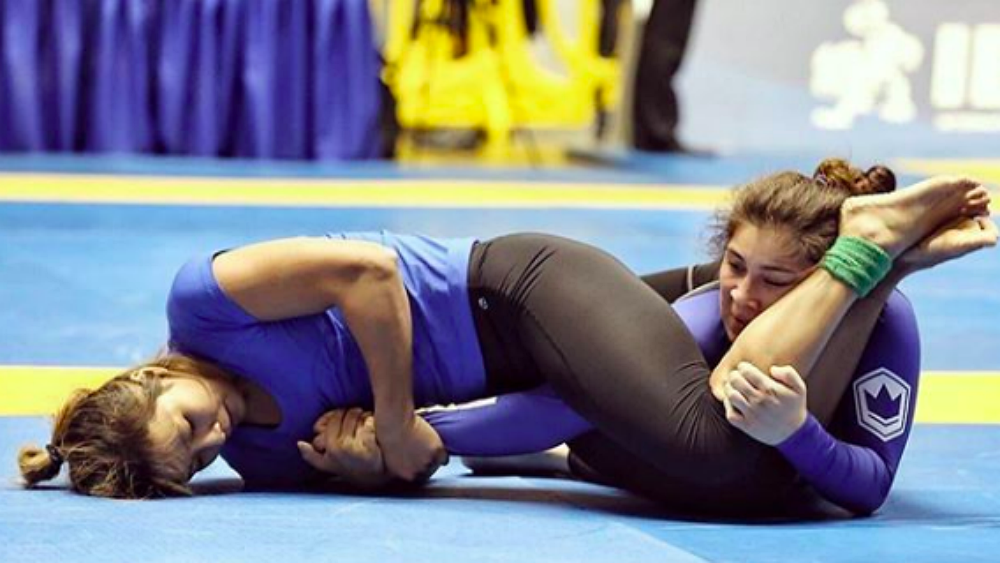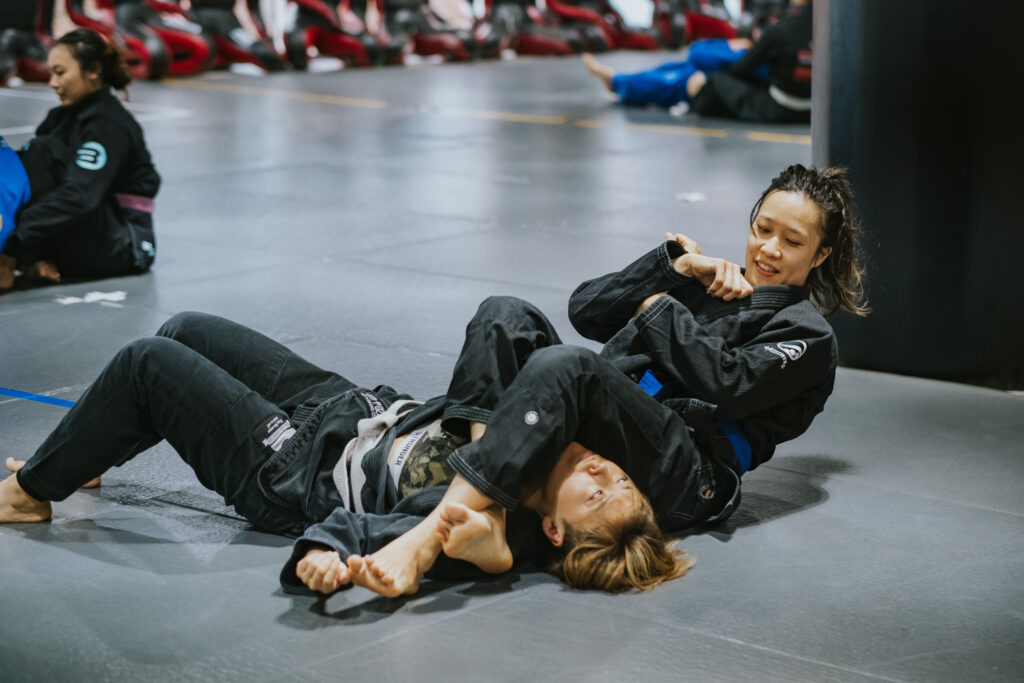BJJ is thought for its always evolving submission recreation, and among the many some ways to complete a match, the “bar” submissions stand out as a few of the most elementary and efficient. These submissions, which generally contain hyperextending a joint in a straight line, mix leverage, timing, and technical management. On this article, we’ll go over the commonest varieties of “bar” assaults in Jiu-Jitsu.
Sorts Of Submissions In BJJ
To understand the mechanics and impression of the “bar” submissions, it helps to know the broader varieties of submissions in BJJ. Typically, submissions fall into three classes: joint locks, chokes and strangles, and compression locks. Joint locks goal the physique’s hinge factors just like the elbows, shoulders, knees, and ankles. Chokes prohibit blood or airflow, forcing a faucet from discomfort or the specter of unconsciousness. Compression locks crush muscle or bone tissue and are much less frequent however nonetheless efficient in sure situations. Amongst these, joint locks are sometimes probably the most versatile and accessible, particularly on the subject of attacking the limbs.
Attacking The Limbs
If you’re focusing on the limbs in BJJ, the concept is to isolate a single arm or leg, management it totally, and apply strain to the joint in a manner that forces your opponent to submit. Limb assaults enable for a variety of entries and transitions. For instance, if somebody defends an armbar appropriately, you may think about switching to a triangle choke or an omoplata. Equally, when you go for a kneebar and your opponent begins to prove, you may usually comply with up with a heel hook. Limb assaults supply choices. They maintain your opponent on the defensive and offer you room to discover your creativity in the midst of a roll or match.
The “Bar” Submissions: Armbar, Kneebar, Dogbar, And Extra
The frequent thread with bar submissions is the straight line leverage that assaults the joint immediately. These strategies are highly effective, technical, and sometimes surprisingly easy when you perceive their mechanics.
The armbar, also referred to as juji gatame, might be probably the most iconic submission in BJJ. It targets the elbow joint by locking your opponent’s arm between your legs and utilizing your hips as a fulcrum. You’re pulling the wrist in a single path whereas controlling the shoulder, and if achieved correctly, the submission comes on quick and clear. You’ll be able to hit this from closed guard, mount, aspect management, or throughout transitions, which makes it extraordinarily versatile.
The kneebar is actually the identical idea, however utilized to the leg. You isolate your opponent’s leg, management the hip and ankle, and lengthen the knee past its pure restrict. This submission might be simply as quick and harmful as an armbar, particularly if you enter it from positions like Ashi Garami or after sweeping your opponent. It requires stable management of the knee line and the flexibility to regulate your angle shortly.
Then there’s the dogbar, which is a bit much less identified however simply as efficient in the suitable fingers. The title comes from the awkward angle the opponent’s arm takes, type of like a canine lifting its leg. It usually begins as a kimura grip from positions like north-south or aspect management, however as a substitute of ending as a shoulder lock, the submission straightens the arm at an odd diagonal, making use of strain in a novel path. It’s an excellent possibility when conventional finishes are exhausting to come back by.
You even have the reverse armbar, typically referred to as a straight armlock, which works the elbow from the alternative angle of a traditional armbar. It usually comes into play from mount or aspect management and may catch an opponent off guard in the event that they’re defending different submissions. One other variation, typically referred to as the shoulder bar, blends components of the dogbar and kimura, specializing in isolating the arm in a bar-style vogue however attacking the shoulder extra immediately.
Fundamental Utility

Submissions like armbars, kneebars, and dogbars might be hit from almost any place—what issues most is timing, management, and easy execution.
These submissions work from virtually wherever, which is a part of what makes them so highly effective. You’ll be able to apply armbars from guard, particularly the closed guard, or from the mount when your opponent begins pushing in opposition to your chest. From again management, if the choke isn’t there, switching to an armbar can end the job.
Kneebars can come from the highest or backside. You may spin into one throughout a scramble, catch one off a failed sweep, and even hit one from standing in case your timing is correct. Dogbars and their cousins are sometimes used throughout transitions. If somebody is defending your kimura or framing in opposition to aspect management, there’s usually a small window to isolate the arm and redirect it right into a dogbar.
Regardless of the place, the secret’s timing and management. You’re not simply grabbing a limb and pulling. You’re organising the assault, neutralizing their capability to maneuver, and making use of the end easily.
Technical Concerns
Precision is every part with these submissions. It’s essential to management the joints above and under the one you’re attacking. So for an armbar, meaning retaining the shoulder and wrist locked in place. For a kneebar, it’s all about controlling the hip and ankle. With out this management, your opponent will escape or defend simply.
Your hips play an enormous position, too. They act as the bottom of the lever. The nearer your fulcrum is to the joint, the extra energy and management you’ll have. That’s why good positioning issues a lot if you’re ending. The strain additionally must be directed straight into the joint. In case your angle is off or when you’re twisting as a substitute of extending, you may lose the submission or give your opponent an opportunity to roll out or counter.
Lastly, perceive the distinction between ache compliance and precise breaking mechanics. Whereas some individuals will faucet from discomfort, a clear bar submission ought to work whether or not or not your opponent is keen to tolerate the ache. Keep targeted and managed to maintain your coaching protected and efficient.
Drilling And Observe

To sharpen your bar submissions, drill them usually, add resistance steadily, and use movement rolling to attach entries and construct fluid transitions.
If you wish to get good at bar submissions, you should drill them recurrently. Begin by engaged on clear reps of every submission from frequent positions. Focus in your angles, grips, and management.
Subsequent, introduce gentle resistance. Have your coaching associate attempt to defend somewhat, so that you learn to make changes on the fly. Over time, add in positional sparring, the place one individual begins in an armbar or kneebar setup and works to complete whereas the opposite defends.
Circulate rolling is one other nice option to construct fluidity. Strive transitioning from one submission to a different and exploring how totally different entries join. The extra time you spend right here, the extra pure these submissions will really feel.
Conclusion
Bar submissions in BJJ, just like the armbar, kneebar, dogbar, and their many variations, are foundational instruments that supply each reliability and room for creativity. Whether or not you’re a newbie studying the fundamentals or a seasoned grappler refining your particulars, mastering the mechanics and timing of those submissions can take your recreation to the subsequent stage. Preserve drilling, keep curious, and respect the faucet!
You might also like:
Solo Grappling: How To Drill Takedowns And Transitions With out A Accomplice

















